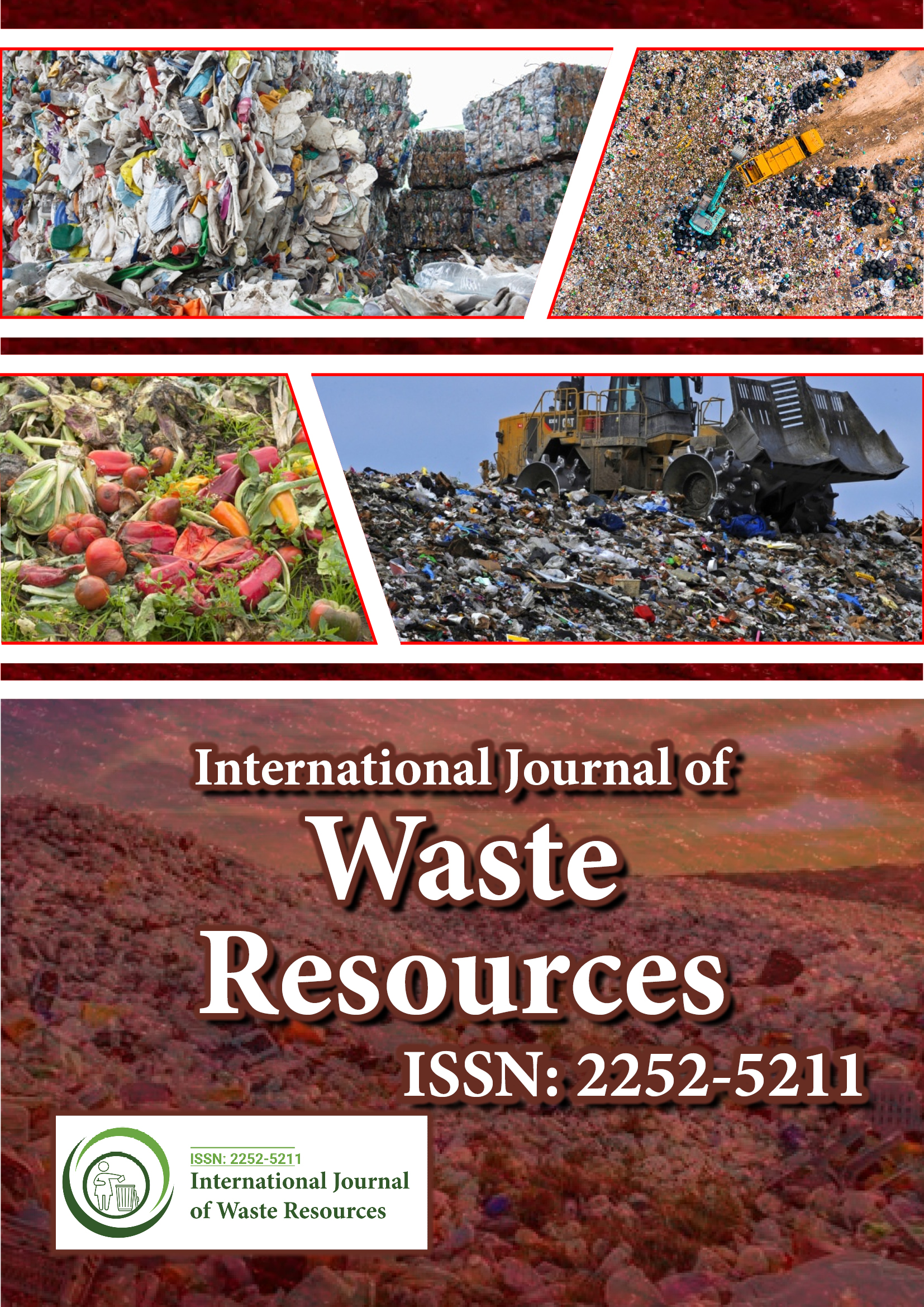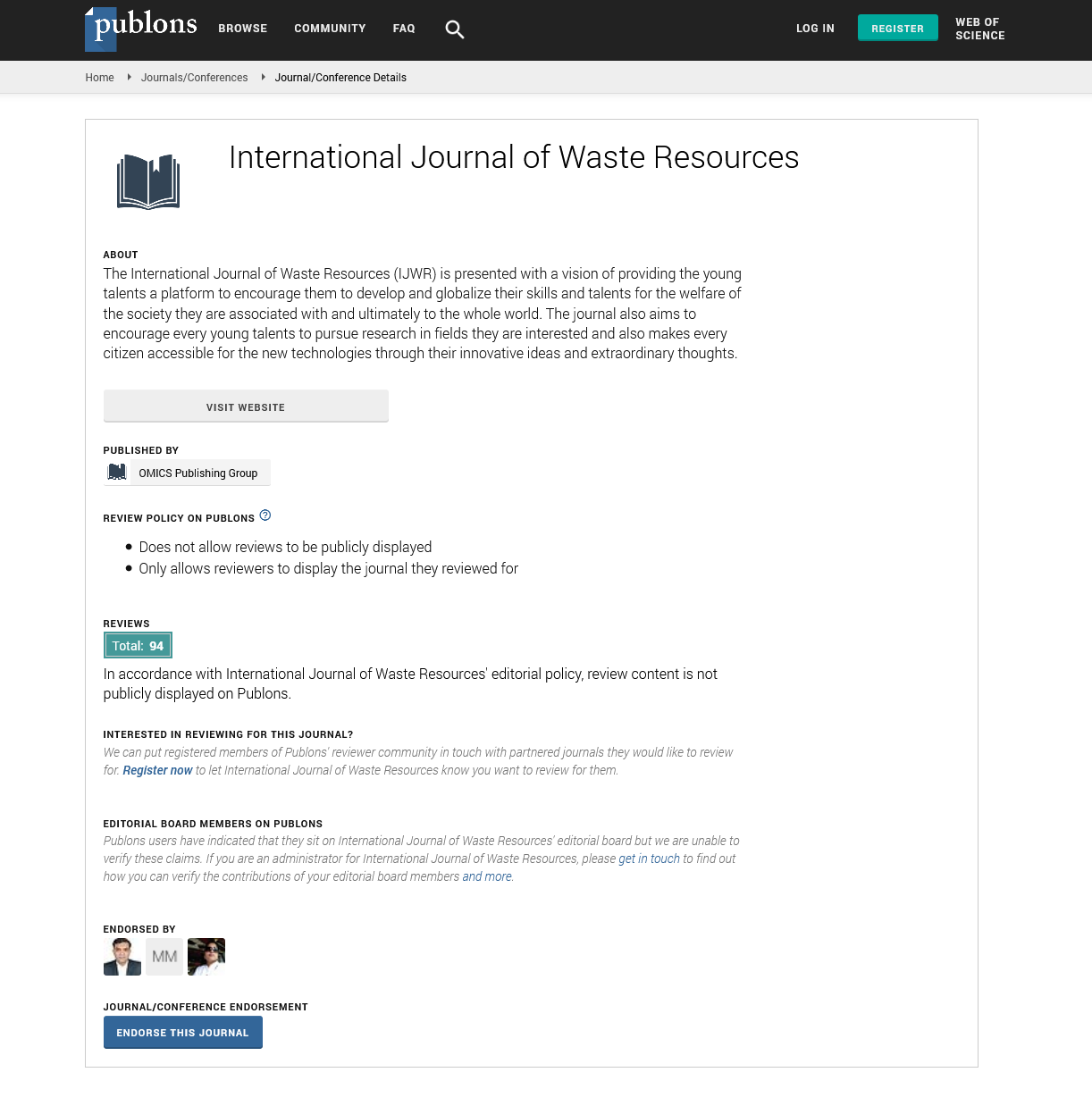Indexed In
- Open J Gate
- The Global Impact Factor (GIF)
- Open Archive Initiative
- VieSearch
- International Society of Universal Research in Sciences
- China National Knowledge Infrastructure (CNKI)
- CiteFactor
- Scimago
- Ulrich's Periodicals Directory
- Electronic Journals Library
- RefSeek
- Directory of Research Journal Indexing (DRJI)
- Hamdard University
- EBSCO A-Z
- Publons
- Google Scholar
Useful Links
Share This Page
Journal Flyer

Open Access Journals
- Agri and Aquaculture
- Biochemistry
- Bioinformatics & Systems Biology
- Business & Management
- Chemistry
- Clinical Sciences
- Engineering
- Food & Nutrition
- General Science
- Genetics & Molecular Biology
- Immunology & Microbiology
- Medical Sciences
- Neuroscience & Psychology
- Nursing & Health Care
- Pharmaceutical Sciences
Opinion Article - (2024) Volume 14, Issue 3
Biowaste Utilization: Converting Organic Waste into Renewable Energy and Fertilizer Solutions
Liam Chen*Received: 28-Aug-2024, Manuscript No. IJWR-24-27471; Editor assigned: 30-Aug-2024, Pre QC No. IJWR-24-27471(PQ); Reviewed: 13-Sep-2024, QC No. IJWR-24-27471; Revised: 20-Sep-2024, Manuscript No. IJWR-24-27471(R); Published: 27-Sep-2024, DOI: 10.35248/2252-5211.24.14.585
Description
The escalating volume of organic waste generated globally necessitates innovative and sustainable management practices. Biowaste, encompassing agricultural residues, food waste and other organic materials, represents a significant environmental challenge but also an opportunity. The conversion of biowaste into renewable energy and fertilizer solutions exemplifies a comprehensive approach to waste management, contributing to sustainable development and environmental conservation. This article examines the multifaceted processes involved in biowaste utilization and highlights its benefits for renewable energy production and soil fertility enhancement. Organic waste constitutes a substantial proportion of the total waste generated worldwide. This waste, if not managed properly, can lead to severe environmental issues, including greenhouse gas emissions, soil and water pollution and loss of biodiversity. Traditional waste disposal methods, such as landfilling and incineration, are increasingly being criticized for their environmental impact and inefficiency in resource utilization. The concept of biowaste utilization revolves around the transformation of organic waste into valuable products, primarily renewable energy and fertilizers. This approach aligns with the principles of the circular economy, emphasizing resource recovery and waste minimization. The conversion processes typically involve biological and thermochemical methods, each with distinct mechanisms and outputs. Anaerobic digestion is a widely adopted biological process for converting organic waste into biogas, a renewable energy source. This process involves the breakdown of organic matter by microorganisms in the absence of oxygen, resulting in the production of methane-rich biogas and digestate, a nutrientrich byproduct. The biogas can be used to generate electricity and heat or upgraded to biomethane for use as a vehicle fuel or injection into natural gas grids. Diversion of organic waste from landfills, thereby reducing leachate and odor issues. Thermochemical conversion processes, such as pyrolysis and gasification, offer alternative pathways for converting biowaste into energy. Gasification, on the other hand, converts organic material into syngas through partial oxidation at high temperatures. Bio-oil, which can be refined into biofuels. Biowaste can also be processed into nutrient-rich fertilizers, contributing to soil health and agricultural productivity. Two prominent methods for producing fertilizers from biowaste are composting and vermicomposting. Composting is a biological process that decomposes organic waste into humus-like material called compost. This process involves aerobic microorganisms breaking down organic matter in the presence of oxygen, resulting in a stable, nutrient-rich product that can enhance soil fertility. Vermicomposting utilizes earthworms to decompose organic waste, producing vermicompost, a highly nutritious organic fertilizer. This process is particularly effective for smallscale waste management and can be implemented in both urban and rural settings. Effective regulatory frameworks and supportive policies are essential to incentivize biowaste utilization. This includes measures such as subsidies, tax incentives and standards for renewable energy and organic fertilizers. Continuous research and innovation are needed to explore new methods and improve existing technologies for biowaste conversion. This includes studying the potential of emerging technologies such as microbial fuel cells and algaebased systems.
Conclusion
Raising public awareness about the benefits of biowaste utilization and encouraging community participation in waste segregation and management are potential for the success of these initiatives. High nutrient content and bioavailability in the resulting vermicompost. Enhanced microbial activity in the soil, promoting plant growth and health. One of the key innovations in this space is the development of "closed-loop" systems, in which waste materials from one product or process are reintegrated into the production cycle of another, minimizing the need for new raw materials. These innovations are increasingly seen in industries such as textiles, construction and automotive manufacturing.
Citation: Chen L (2024). Biowaste Utilization: Converting Organic Waste into Renewable Energy and Fertilizer Solutions. Int J Waste Resour. 14:585.
Copyright: © Chen L. This is an open-access article distributed under the terms of the Creative Commons Attribution License, which permits unrestricted use, distribution, and reproduction in any medium, provided the original author and source are credited.

